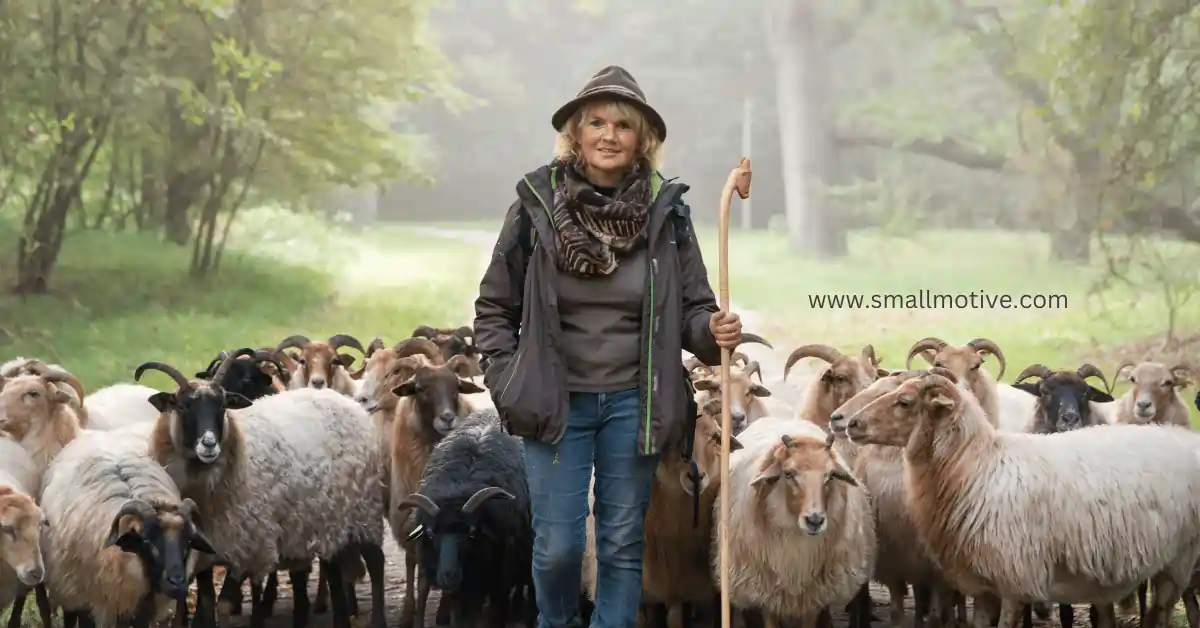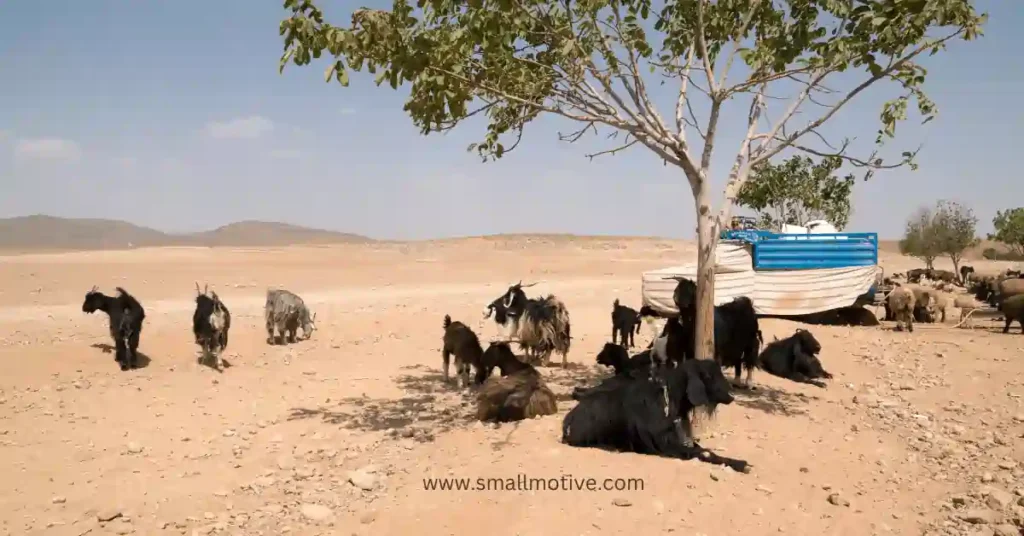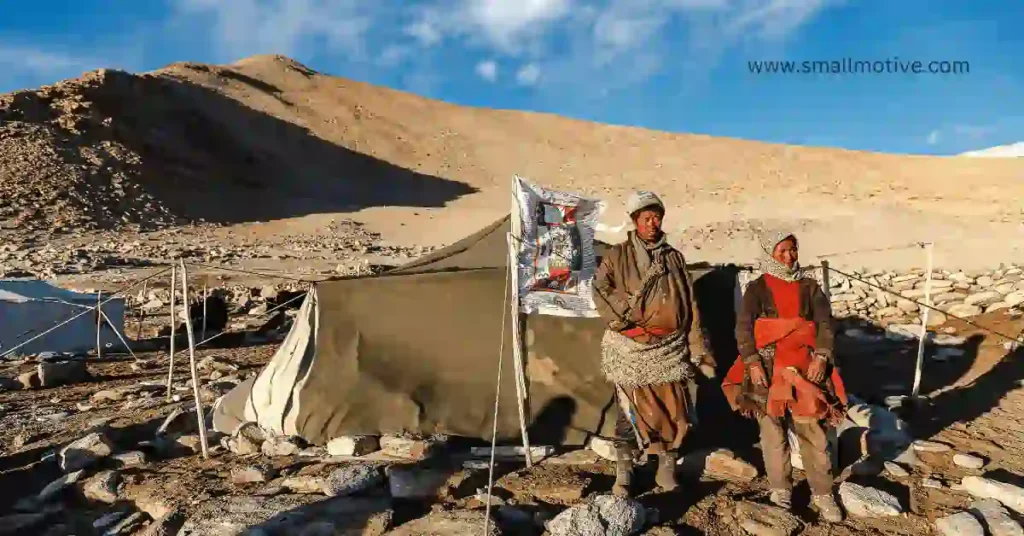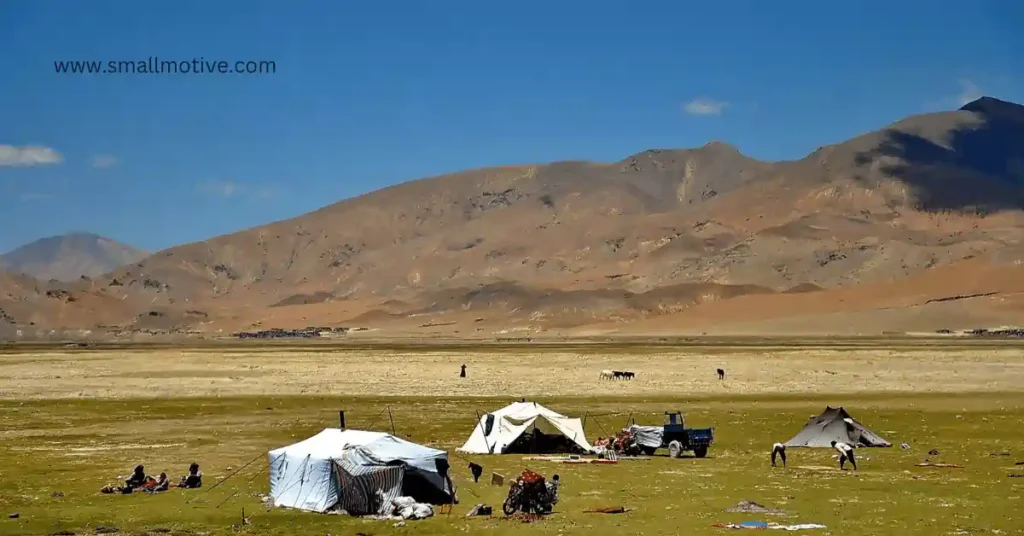Nomadic herding, a captivating practice that has persisted for millennia, represents a unique way of life that revolves around the sustainable utilization of mobile livestock resources. In this comprehensive article, we will delve into the intricate world of nomadic herding, exploring its historical significance, cultural relevance, environmental impact, and the challenges faced by nomadic communities today. Let’s embark on a journey through arid deserts, lush steppes, and rugged mountains to uncover the enigmatic world of nomadic herders.
1. Understanding Nomadic Herding
What is Nomadic Herding?
Nomadic herding, often referred to as pastoral nomadism, is a way of life centered around the practice of moving livestock from one grazing area to another in search of fresh pastures. The term “nomadic” implies constant movement, and in the case of herders, this movement is driven by the need to provide sustenance for their animals.
A Brief History
Nomadic herding has a history that spans thousands of years. The origins of this practice can be traced back to various parts of the world, including Africa, Asia, and the Middle East. It is believed that nomadic herding emerged as a response to the challenges posed by harsh and unpredictable climates, as well as the need for sustainable resource management.
Geographic Spread
Nomadic herding is not confined to a specific region or continent; it is a global phenomenon. Different cultures have adopted this way of life, adapting it to suit their specific environmental conditions. The geographic spread of nomadic herding is a testament to its resilience and adaptability.
2. Nomadic Herding Communities
Pastoral Nomads
Pastoral nomads are at the heart of the nomadic herding lifestyle. They are individuals and families who depend on herding animals such as cattle, sheep, goats, and camels as their primary source of income. The relationship between these herders and their animals is symbiotic, with both depending on each other for survival.
Mobile Tribes
Mobile tribes are the larger social units that pastoral nomads often form. These tribes consist of multiple families or clans that come together for mutual support and protection during their nomadic journeys. The dynamics within mobile tribes are fascinating because they involve intricate social structures and hierarchies.
3. The Nomadic Herding Lifestyle
Daily Routines
Life for a nomadic herder is dictated by the needs of their animals. Daily routines revolve around tasks such as feeding, watering, and protecting the livestock. These routines are not only essential for the well-being of the animals but also for the survival of the herders themselves.
Migration Patterns
The essence of nomadic herding lies in the cyclical migration from one grazing area to another. These migration patterns are carefully planned to ensure that the herds have access to fresh and abundant pastures throughout the year. The knowledge of the landscape and its resources is passed down through generations.
Social Structure
The social structure of nomadic herding communities is intricate and plays a crucial role in their survival. Elders hold valuable knowledge and serve as decision-makers, while the younger generation is responsible for day-to-day tasks. Respect for tradition and a strong sense of community are prominent features of these societies.
4. Traditional Practices
Animal Husbandry
Animal husbandry is the foundation of nomadic herding. Herders have developed a deep knowledge of their livestock, understanding their needs and behaviors. They are skilled in breeding, milking, and utilizing animal by-products for sustenance and trade.
Shelter Construction
Nomadic herders have developed ingenious methods for constructing temporary shelters that can be assembled and disassembled quickly. These portable dwellings, such as yurts and tents, are designed to withstand the rigors of the natural environment and provide a comfortable living space for herders and their families.
Food and Cuisine
The diet of nomadic herders is influenced by the availability of resources in their surroundings. It typically includes dairy products, meat, and grains. The cuisine of these communities reflects their resourcefulness, featuring dishes that are both nutritious and flavorful.
5. Cultural Significance
Nomadic Herding and Culture
Nomadic herding is deeply intertwined with the cultures of the communities that practice it. The traditions, beliefs, and values of these societies are often shaped by their nomadic lifestyle. This interconnection between herding and culture is a testament to the enduring nature of this way of life.
Cultural Diversity
One of the remarkable aspects of nomadic herding is the diversity it encompasses. Each nomadic community has its own unique customs, languages, and rituals, creating a rich tapestry of human expression in the world of herders.
Traditions and Festivals
Nomadic herders celebrate a variety of traditions and festivals that commemorate significant events in their lives, such as the birth of livestock, successful migrations, and harvests. These celebrations reflect their deep connection to the land and its resources.
Art and Craft
The artistry and craftsmanship of nomadic herding communities are exemplified in their clothing, tools, and decorations. These items often incorporate intricate designs and vibrant colors, showcasing the aesthetic sensibilities of these cultures.
6. Oral Traditions
Folklore and Stories
Oral traditions are a central part of nomadic herding communities. Folklore and stories are passed down through generations, serving as a means of education, entertainment, and preservation of cultural heritage. These narratives often feature animals as central characters, highlighting their importance in the nomadic world.
Language and Communication
Languages spoken by nomadic herders are diverse and reflect the regions they inhabit. Communication is vital for the success of migrations and resource management, and herders have developed effective methods of conveying information over long distances.
Nomadic Music
Music plays a significant role in the lives of nomadic herders. Traditional instruments, such as flutes and drums, are used to create melodies that accompany daily activities and celebrations. Nomadic music offers a glimpse into the essence of these communities.
7. Sustainability and the Environment
Impact on the Environment
The impact of nomadic herding on the environment is a subject of considerable debate. While it is true that the movement of herds can lead to localized land degradation, it is essential to recognize the complex relationship between herders and the ecosystems they inhabit.
Grazing Patterns
Nomadic herders carefully manage their grazing patterns to prevent overgrazing. They understand the seasonal growth cycles of pastures and plan their movements accordingly, allowing vegetation to regenerate.
Erosion and Desertification
In some regions, the constant movement of herds can contribute to soil erosion and desertification. However, it is important to note that these impacts vary greatly depending on local conditions and the practices of individual communities.
Conservation Efforts
Modern nomadic herding communities are increasingly recognizing the importance of sustainable resource management. Many individuals are actively involved in conservation efforts to safeguard their lands and the biodiversity upon which they depend.
8. Adaptations for Sustainability
Resource Management
Nomadic herders have developed resource management strategies that focus on long-term sustainability. These strategies include rotational grazing, which allows pastures to recover, and the protection of critical habitats.
Climate Resilience
Climate change presents a significant challenge to nomadic herding. Communities are adapting by diversifying their livelihoods, exploring new migration routes, and adopting practices that enhance resilience in the face of changing weather patterns.
Biodiversity Conservation
Many nomadic herding communities possess a deep understanding of local ecosystems. They play a vital role in preserving biodiversity by protecting habitats and wildlife within their territories.
9. Modern Challenges
Economic Challenges
Nomadic herders face economic challenges in a rapidly changing world. Market integration and the monetization of their products have introduced new dynamics into their traditional way of life.
Market Integration
The integration of nomadic communities into global markets has both positive and negative impacts. While it provides opportunities for income generation, it also exposes herders to market fluctuations and competition.
Land Rights and Ownership
Land rights and ownership pose significant challenges for nomadic herders. Encroachment on traditional grazing lands and disputes over land tenure can disrupt the way of life of these communities.
Access to Healthcare and Education
Access to essential services, such as healthcare and education, is often limited for nomadic herders. Ensuring that these services reach remote communities is a crucial issue that requires attention.
10. Cultural Preservation
Cultural Erosion
The preservation of cultural traditions is a pressing concern for nomadic herding communities. The rapid pace of change in the modern world can lead to the erosion of cultural practices and languages.
Preservation Efforts
Many organizations and individuals are working to document and preserve the cultural heritage of nomadic herders. These efforts include recording oral traditions, documenting traditional knowledge, and supporting cultural festivals and events.
Tourism and Nomadic Herding
Tourism presents both opportunities and challenges for nomadic herders. It can provide income and facilitate cultural exchange, but it also raises questions about the impact of tourism on traditional lifestyles and environments.
11. Nomadic Herding Across the World
Nomadic Herding in Africa
The Maasai of East Africa
The Maasai people of East Africa are perhaps one of the most iconic nomadic herding communities. Their vibrant culture, distinctive clothing, and unique way of life have attracted international attention.
Tuareg People in North Africa
The Tuareg people, also known as the “Blue People” due to their traditional indigo-dyed clothing, are nomadic herders in North Africa. They have a rich history of trade and trans-Saharan migrations.
Fulani Nomads in West Africa
The Fulani, also known as Fula or Fulbe, are widely dispersed across West Africa. They are known for their cattle herding and have made significant contributions to the culture of the region.
Nomadic Herding in Asia
Mongolian Nomads
Mongolia is often associated with the nomadic way of life, especially in the vast steppes of the country. Mongolian nomads are renowned for their horsemanship and the iconic ger, which is their traditional dwelling.
The Kazakhs of Central Asia
The Kazakh people are spread across Central Asia, and their nomadic traditions are deeply connected to the vast landscapes of the region. Their yurts are a symbol of their cultural identity.
The Raika of India
The Raika people of India have a long history of camel herding. They are an integral part of the cultural fabric of Rajasthan, contributing to the state’s identity.
Nomadic Herding in the Middle East
Bedouin Tribes
Bedouin tribes are synonymous with a nomadic lifestyle in the deserts of the Middle East. Their knowledge of desert survival is legendary, and they continue to practice traditional herding.
The Bakhtiari of Iran
The Bakhtiari people of Iran are renowned for their seasonal migrations through the Zagros Mountains. They navigate treacherous terrains to ensure that their livestock has access to the best pastures.
Yazidis of Iraq
The Yazidis, a religious and ethnic minority in Iraq, have a history of nomadic herding closely tied to their religious beliefs and practices.
12. The Future of Nomadic Herding
Challenges and Opportunities
The future of nomadic herding faces both challenges and opportunities. Climate change, economic pressures, and social changes present obstacles, but they also offer potential for sustainable development.
Climate Change
Nomadic herding communities are at the forefront of climate change. They must adapt to shifting weather patterns and explore strategies to mitigate their impacts.
Policy and Advocacy
Advocacy for the rights and needs of nomadic herders is gaining momentum. Policy changes and international recognition are essential for safeguarding their way of life.
Sustainable Development
Sustainable development is a goal for many nomadic herding communities. Finding ways to balance tradition with modern needs is a complex but necessary task.
13. The Nomadic Herder’s Voice
Perspectives on the Future
The voices of nomadic herders are crucial in shaping their future. They offer unique insights into the challenges they face and the solutions they envision.
The Role of Technology
Technology can play a vital role in enhancing the livelihoods of nomadic herders. From mobile communication to sustainable farming practices, technology has the potential to empower these communities.
Education and Empowerment
Access to education and opportunities for empowerment are vital for the future of nomadic herding communities. Initiatives that provide education and training can equip herders with the skills needed to thrive in a changing world.
FAQs about Nomadic Herding
How do nomadic herders adapt to changing seasons?
Nomadic herders are highly attuned to nature’s cues. They move their herds in search of fresh pastures and water sources as the seasons change.
What is the significance of livestock in nomadic herding communities?
Livestock provide nomadic herders with food, clothing, and other essential resources. They are the backbone of the nomadic lifestyle.
How has modernization affected nomadic herding?
Modernization has brought both opportunities and challenges to nomadic herders. While it has improved access to education and healthcare, it has also led to conflicts over land and resources.
Are there any gender-specific roles in nomadic herding communities?
In many nomadic cultures, both men and women play essential roles. Men often handle livestock, while women manage the household and process dairy products.
What is the future of nomadic herding in the face of climate change?
The future of nomadic herding is uncertain, but adaptation and sustainable practices are key to ensuring its survival in a changing world.
How can we support nomadic herding communities?
Supporting nomadic herders can be achieved through initiatives that prioritize land rights, sustainable practices, and education. This will ensure a brighter future for these communities.
Conclusion: The Timelessness of Nomadic Herding
In conclusion, nomadic herding is a timeless way of life that continues to captivate the imagination. It offers a unique perspective on the intersection of culture, environment, and tradition. While facing modern challenges, nomadic herding remains an integral part of many societies, and its future holds both challenges and opportunities. As we reflect on the intricate tapestry of nomadic herding, we are reminded of the enduring spirit of the communities that have embraced this way of life for generations.





